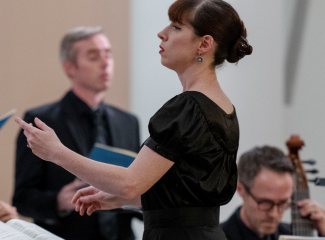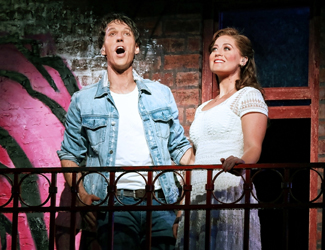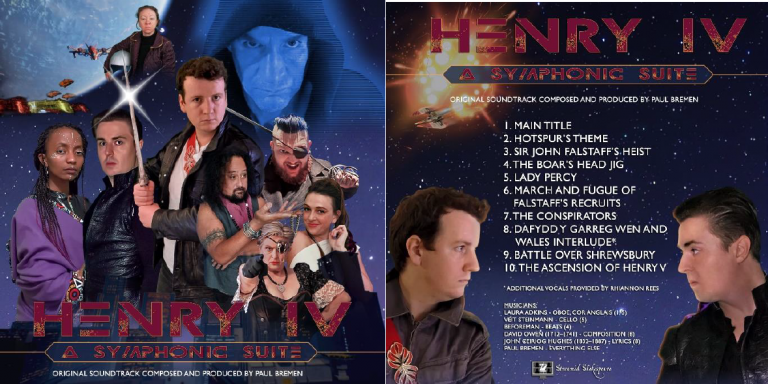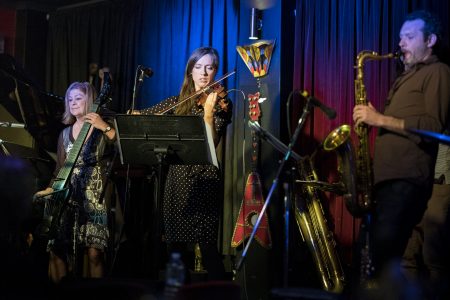Bach’s Universal Themes – Madeleine Easton On Bach’s Relevance Here And Now

“Bach is like Shakespeare. They both contain universal themes, which is why we can still relate to Romeo and Juliet; it’s why we go to see West Side Story or Miss Saigon. Look at how badly Otello the Moor was treated – these themes recur every day and they are themes that Bach deals with – love and joy, tragedy and heartbreak, betrayal and wonderful comfort. It’s all there in his music.”
It is the reason why, says violinist Madeleine Easton, the music of Johann Sebastian Bach, who died nearly 270 years ago in a small German town and who never left his country of birth, is relevant to 21st century Australia. Founding Artistic Director of the Bach Akademie Australia, Easton champions the music of Bach and has cogent reasons why his legacy must be kept alive.
Watching and hearing Easton multi-task as leader of her ensemble, soloist and director, I am aware that her seeming fragility conceals a steely ambition; her gracefulness veils a meticulous technique. Not surprisingly, she trained as ballerina, combining strength with a delicacy that is evident as she raises her arms, port de bras fashion, to play her violin or to direct her troupe.
Meeting her in suburban Sydney, Easton speaks with irrepressible passion as she outlines her vision for the Bach Akademie Australia. She is in the throes of completing applications for funding. She is also writing her personalised Artistic Director’s insights for the ensemble’s next concert which has the seasonal title of Comfort and Joy, a selection of cantatas and orchestral works by JS Bach. She has worked well into the previous night, preparing the scores for her musicians.
Part of this preparation involves translating the text from German to English – even for each orchestral player. “Because if you don’t understand the words and know what you’re playing about, you’re flying blind and only half-playing the music.” Easton recalls the words of Sir John Eliot Gardiner, with whom she has worked for 16 years. “Something he said to me, has always stuck with me – he said ‘Don’t play notes, play words.’” What I’m after, is a completely integrated performance between singers and instrumentalists – a true complicity between them so that the singers start to think like an instrumentalist and vice versa. Bach’s music deserves that.”
Graduating from the Sydney Conservatorium of Music, Easton went to London and started working with the legendary exponent of JS Bach, John Eliot Gardiner and his ensemble, the English Baroque Soloists. It was during this time that she discovered Bach’s cantatas. “I began studying the baroque violin when I joined the baroque orchestra at the Con, which was then directed by Paul Dyer. I played baroque violin concurrently throughout my degree at the Sydney Con, but more as a hobby. When I moved to London, I continued to study modern violin but began to explore early music performance along with everything else. “My mind was continually blown by each and every cantata. As I got older, I began to look at them more from the inside, starting during the cantata series at the Royal Academy and getting to direct them for the first time from 2009. Of any composer, Bach offers me more, both intellectually as well as emotionally” says Easton, with her hand on her heart. “That’s not to say that I don’t absolutely love getting my teeth stuck into a big Mahler or Shostakovich Symphony every now and again!”
“As I studied the words,” Easton continues, “I realised that there’s so much in them that we can take with us. The cantata, Süsser Trost – ‘sweet comfort’ is first on the programme and gives the feeling that all of humanity can relax now that Jesus had been born. It conveys an amazing feeling of calm. The second half of that cantata describes nobility in poverty and the lowliness of Jesus and how kingly He is. It shows that we can find greatness in the humblest person.”
The Orchestral Suite No. 2 in B minor BWV 1067 follows, not especially religious “but a wonderful piece of virtuosic, instrumental happiness. And then we get on to the Christmas Oratorio – there you have the story of the Nativity. When I listened to the opening bars of the Sinfonia, I decided I had to play this. This is what is going to make people happy. Everyone in that room will go away thinking ‘Thank God I heard that music.’”
The concert closes with Bach’s BWV 191, Gloria, which, as Easton says, conveys the whole message of “Glory to God in the highest, goodwill and peace. These words appear twice in this programme, in different settings – in German in the Christmas Oratorio and in Latin in the Gloria. As I wrote in my foreword, the more frenzied life becomes and the more we run around stressing about emails and mobile phones and deadlines, politics and bushfires… it’s important to stop and think what is important to us – the things that make us happy. For me, that’s family, people – spending time with my niece and nephew mean more to me than anything on the planet.” Easton’s wish is that the audience at Comfort and Joy, reflect on what is important to them and why. “This is my thinking behind the concept of this concert and I would love to give to my listeners that feeling of comfort and joy, and to remember what’s important to us all.”
Does the appreciation of Bach’s music depend on religious faith? Easton disputes this assertion, saying “I don’t believe it is essential to have a deep and abiding understanding of Christianity or belief in it to successfully perform Bach’s music. I do believe however, that it is essential to understand the meaning of the text in those cantatas, and to take the time to understand how Bach represents that meaning musically. It is also essential that you are able to set aside your personal views about religion and devote yourself entirely to being a conduit for Bach’s faith. If you can do that, you can then do justice to his music.”
Easton plays a 1682 Giovanni Grancino violin, on which she plays more “modern” repertoire, but which she will often string with gut, especially for projects with the Orchestra Revolutionaire e Romantique. Her journey with J S Bach started early, with the famous Minuet in G major BWV 114 in the Suzuki method syllabus. As she progressed, she mastered the solo sonatas and partitas – moving to the more demanding ones like the E major Praeludium No 3 BWV 1006. “Once you’ve tackled the fugues, which, my gosh, are difficult,” she protests, “you get to the Chaconne which I hit when I was about 16, and my whole world exploded! The perfection of those 32 variations on that ancient Spanish dance, with its descending bass line that dates back to the 1200s, is unsurpassed. When I started exploring that piece, I found it contained a universe. I found every conceivable emotion within it.”
Cautiously, I point to Sir John Eliot Gardiner’s notoriety as an exacting taskmaster and ask what it is like to work with him. “He can be terrifying! He’s 6’4” and he’s got a big, loud voice” she says lightly. “But I began to respect his absolutely uncompromising attitude. He never accepts passengers in the orchestra, because he cares so much about the product and about what he wants to project. You cannot play out of tune or out of time – you have to be perfect. And that kind of constant pressure to be perfect has worked its way into my DNA. I’ve worked with Sir John for 16 years now and I carry that experience and want to take everybody up to that level. I hope I’m not as terrifying as him, but I will not accept anything but the best, because the music demands it and I want every instrumentalist and every singer to live every word as if their lives depended on it.”
Does Easton admit to having a favourite piece amongst Bach’s vast canon? “It’s impossible to say, but if I had to pick one piece which encapsulates the best of Bach, it’s his Mass in B minor. It’s a masterpiece in every way. The fact that it’s a mirror image of its itself harmonically, makes it a work of genius. It’s the ultimate combination of intellect and emotion. The very opening makes me realise that I am embarking on a journey and by the time I get to the end with the Dona Nobis Pacem I get goose bumps every time and my eyes tear up.”
Then comes the raison d’etre for her ensemble. “The whole reason I started this was not only to showcase the works of J S Bach, but to give Australia an ensemble that has its core, musical integrity, scholarship and excellence at the very highest level. Which is not to say that it isn’t already here – but to especially elevate the performance of Bach’s music to the very highest international level. I want to tour and establish an international reputation. We’ve already been approached by the Leipzig Bach Festival. Also, it is a great time to be a female director. There is a distinct trend towards female conductors and this is the time for the Bach Akademie Australia to get out there and get noticed, giving performances of an excellent standard.”
Alongside these serious ambitions lies something more touching and which draws on the very visceral response that Bach’s music can draw. “The greatest gift I can give anyone,” explains Easton, “is that feeling of peace and calm and that everything is right with the world – even if only for a couple of hours.”
Shamistha de Soysa for SoundsLikeSydney©







